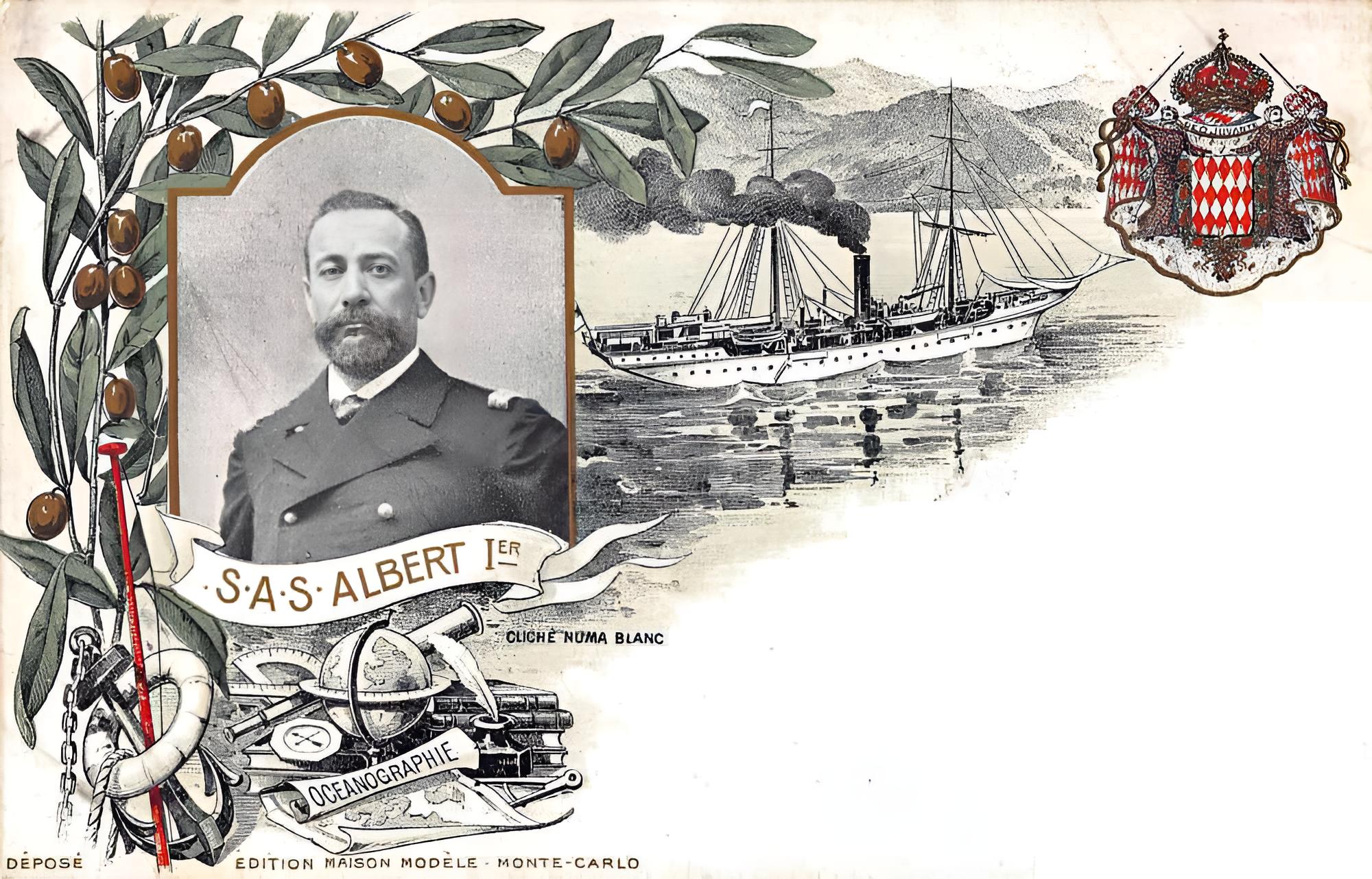Ship details:
Length: 269 ft (82 m)
Year: 1911
Builder: FCM, La Seyne, Toulon
Size: 1650 tonnes
Power: 2200 hp twin screw
Speed: 15 knots
Owner: Prince Albert I
After WWI the ship stayed in Monaco harbour to Albert’s death in 1922. In 1923, she sailed to England to be sold. She passed into American hands, spent many years berthed in New York, then Rhode Island. She ended her days ingloriously as a pontoon in the Panama canal.
Broadcasting:
Albert I (Albert Honoré Charles Grimaldi; 13 November 1848 – 26 June 1922) was Prince of Monaco from 10 September 1889 until his death. He devoted much of his life to oceanography, exploration and science. Accompanied by some of the world’s leading marine scientists, he travelled the length and breadth of the Mediterranean, making numerous oceanographic studies, maps and charts. Prince Albert was something of a pioneer in deep-sea sonic measurements.
Hirondelle II was Albert’s fourth and final explorer ship which had been built in 1911. It was his fastest and largest ship, an impressive research yacht. The number of crew members grew from 15 on the first ship to 80. On board, the Prince experimented with numerous inventions, including weather balloons, photography and cinematography. The yacht was even equipped with wireless telegraph. Accordingly, a radio operator was also part of the crew on the Hirondelle II.
On board his yacht, Prince Albert I experimented with transmitting and receiving tones in a similar way to Marconi. The apparatus on board the Hirondelle II made it possible to transmit simple pieces of music with 10 different tones (thus including at least one octave).
On 11 September 1913, the New York Herald enthusiastically reported on a “concert” given by Prince Albert I during his visit with the yacht on the Hudson River: „The Hirondelle last night at half-past nine o’clock gave a wireless concert, having first asked the HERALD station to notify all vessels within range. There were popular selections, the “Marseillaise” and “America” upon the programme. The music was heard by operators at wireless stations for many miles and at the Brooklyn Navy Yard and by persons who were permitted to put on the telephone head pieces at the stations. The vessels within call thanked the Hirondelle for the entertainment.“
Sources:
https://earlyradiohistory.us/1913mon.htm
Reclams Universum. Moderne illustrierte Wochenschrift. 28. Jahrgang. Druck und Verlag von Philipp Reclam jun. in Leipzig 1912



